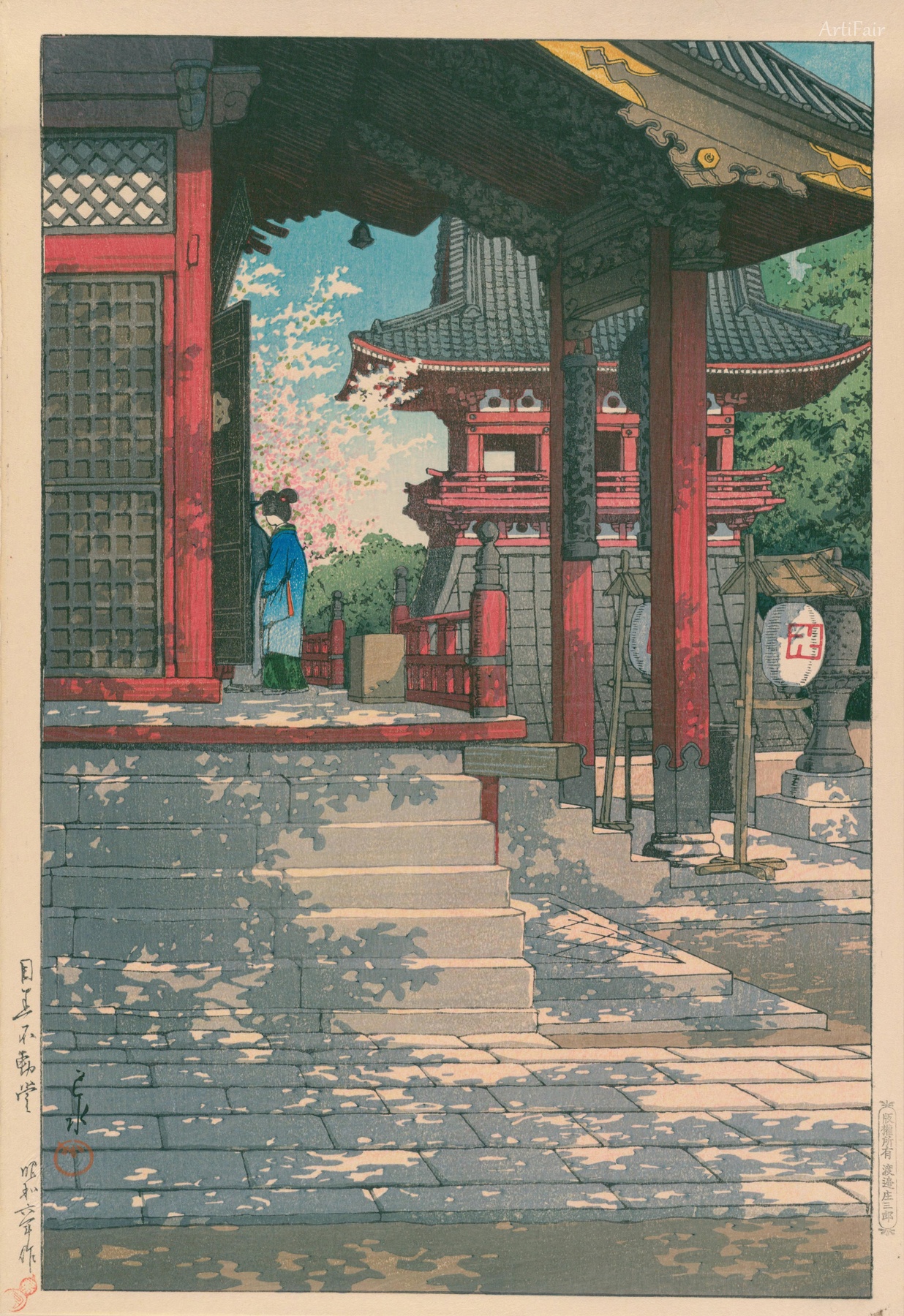
Art Appreciation
This serene print captures a quiet moment at a traditional Japanese temple complex, bathing in the gentle dappling of sunlight through the trees. The architectural details—the tiered roofs adorned with intricate carvings and the vibrant vermilion pillars—draw the eye into the depth of the scene. A lone figure dressed in traditional attire stands with their back turned to the viewer, adding a contemplative human element but allowing the surroundings to dominate emotionally. Kawase Hasui’s mastery of woodblock technique is evident in the delicate yet precise linework and subtle gradations of color that bring a tangible texture to stone, wood, and foliage alike. The palette leans into soft blues and greens contrasted with the traditional red temple elements, expressing a peaceful reverence that blends nature with human craftsmanship.
The composition leads the viewer’s gaze upward and inward toward the temple pavilion in the background, framed naturally by the shadowed overhang in the foreground. The print’s atmosphere invites quiet reflection, evoking the calm and spiritual stillness typical of early 20th-century Japan as it balanced rapid modernization with its cultural heritage. This work is part of the shin-hanga movement, which revitalized ukiyo-e with modern sensibilities, blending traditional Japanese aesthetics with Western influences—an artistic crossroads that is palpable in the harmony of structure, color, and mood in this evocative scene.